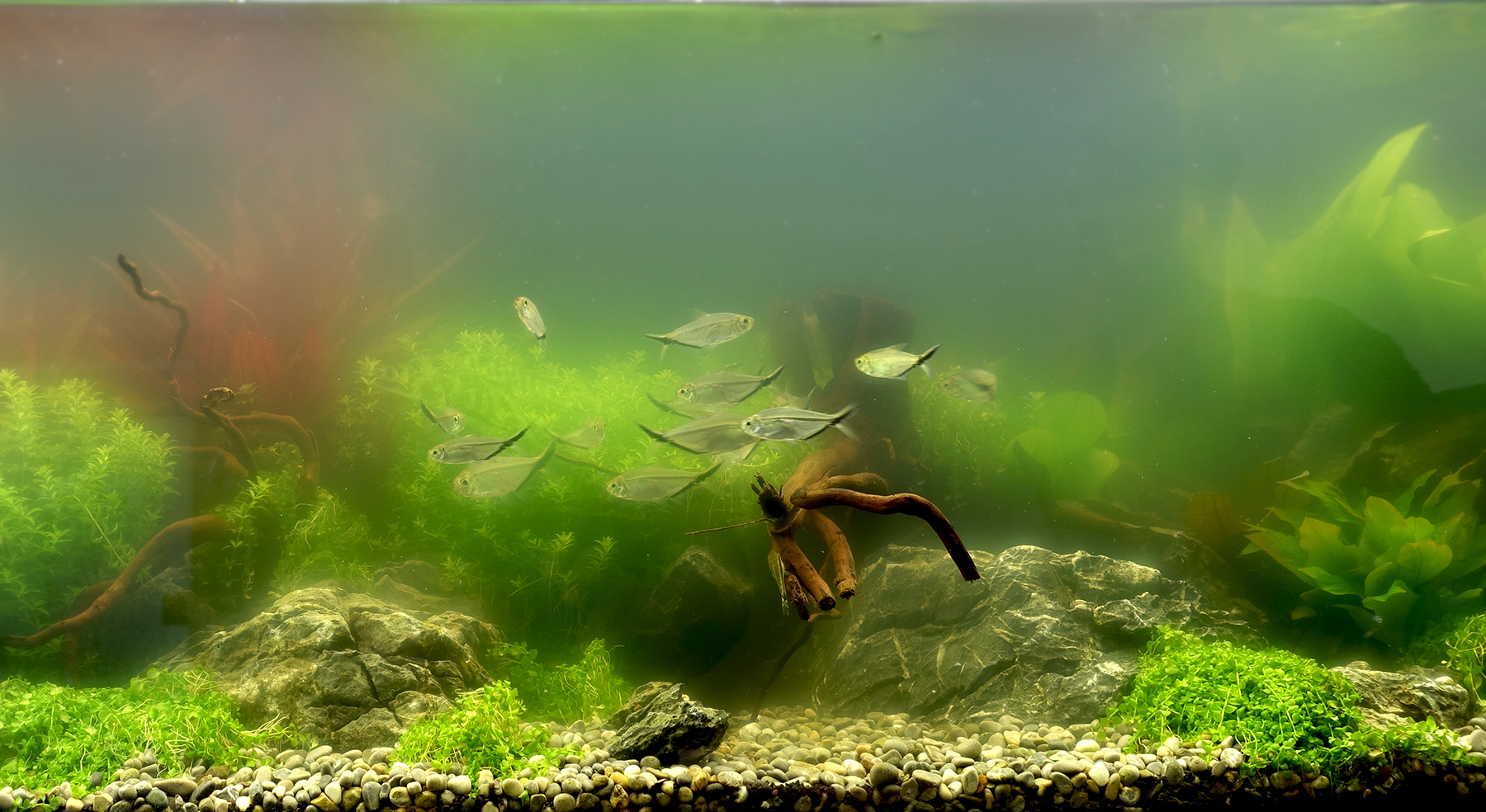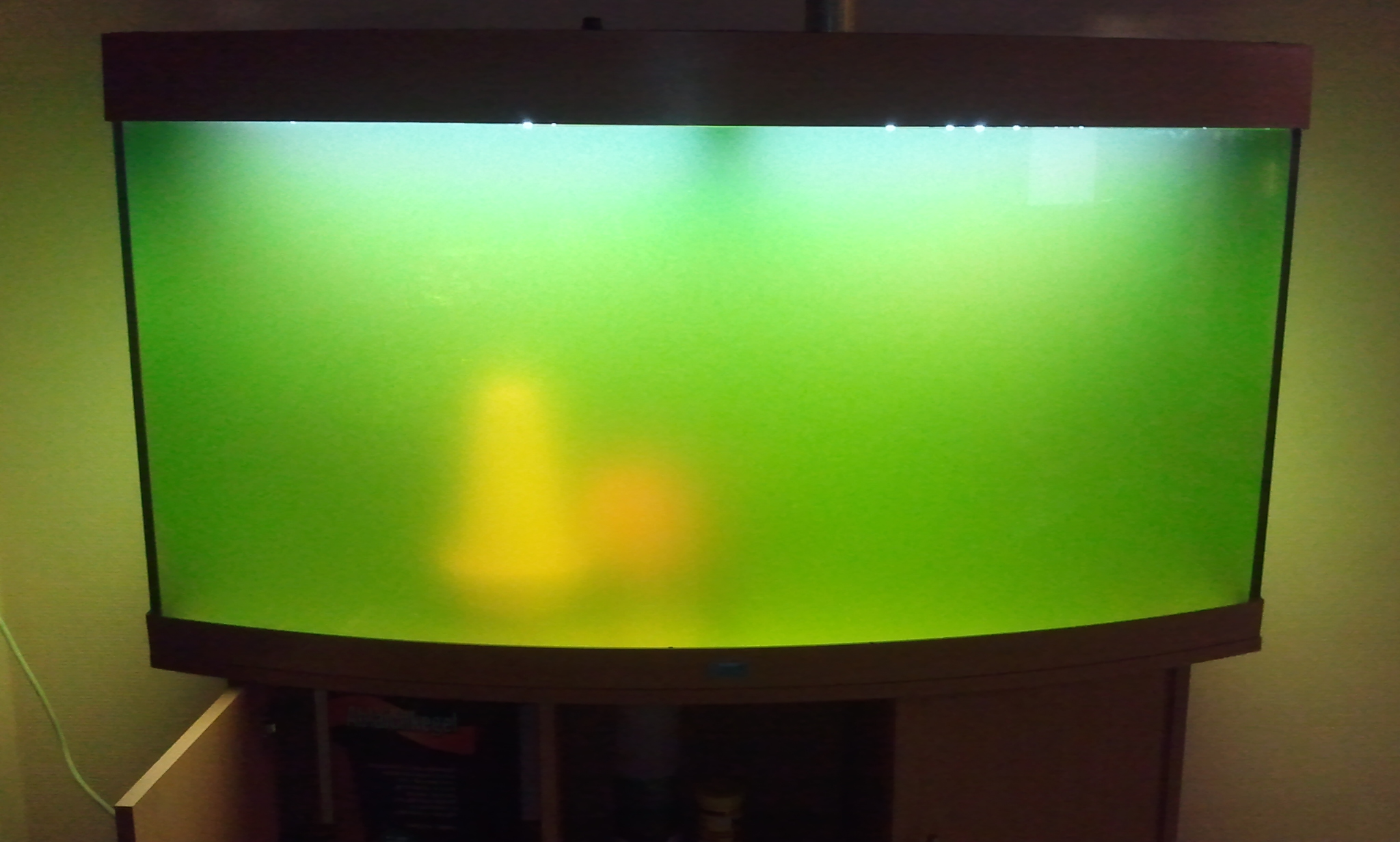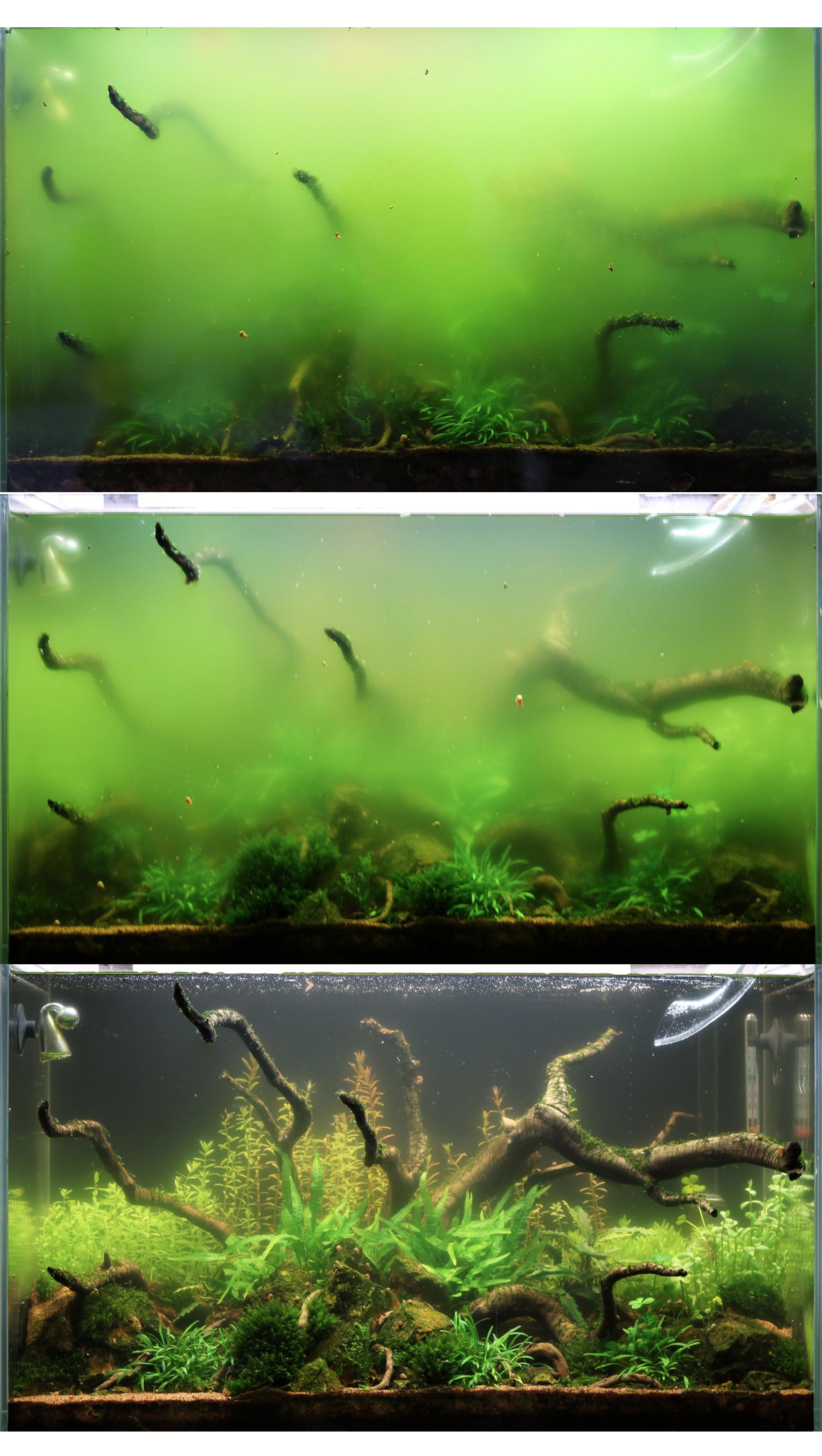Successfully combat algae bloom in the aquarium
In the aquarium, an algae bloom can occur under certain circumstances - the water turns green and in the most extreme case you can no longer see through the green soup. These floating algae belong to the group of green algae, i.e. they contain the green leaf pigment chlorophyll. In most cases, the culprits of algal blooms are tiny unicellular algae whose spores are carried into the aquarium through the air and which multiply en masse and rapidly under favorable conditions.

Suspended algae as a food source
Suspended algae are an important food source for tiny crustaceans such as water fleas, which are popular as live food. Mussels also like to feed on the tiny green algae floating in the water, both in nature and in the aquarium. There are therefore enough aquarists who deliberately grow floating algae, for example to feed their valuable live food species-appropriate and rich in vitamins or as food for their mussels. Of course, this is usually not done in the aquarium, but in a separate container!

to our mussels
Instructions for the cultivation of floating algae
The best way to do this is to take advantage of the preference of the floating algae for ammonium and add NH4 specifically - or simply add aquarium fertilizer with the nutrients nitrate (N), potassium (K) and phosphate (P), i.e. macronutrients, in about one and a half to double the dose into the algae breeding tank. Of course, this only works if there are no animals around! Direct sunlight is then often sufficient to cause a lush algae bloom. The algae soup is then used to feed the mussels or water fleas specifically. The small amount of fertilizer contained in these portions does not harm the animals.
Suspended algae - a problem in the aquarium?
In very severe algae blooms, where the water is really a thick green soup, the higher plants can have problems because not enough light can get through to them. For the animal inhabitants in the aquarium, however, even such heavy algae blooms are usually not a problem because the algae produce massive amounts of oxygen. Lighter algae blooms are neither harmful for the aquarium plants nor for the aquarium animals - but of course they still do not look nice.
Recognizing algae blooms
Of course you can see very well if you have a real algae bloom in your aquarium - if the whole aquarium water just glows green, the diagnosis should be easy. If it is just a hint of an algae bloom, a white sheet of paper will help. It is held very briefly in the aquarium water at a short distance from the front pane. In this way it is easy to see whether the water turbidity is greenish.

Where does an algae bloom come from?
As with all green algae, a mass occurrence of floating algae is due to an imbalance of nutrients. Here, the higher plants can then no longer utilize everything, and the excess nutrients such as nitrate, potassium or phosphate benefit the algae. An algae bloom often occurs in the initial phase of the aquarium during the run-in period, when the plants cannot yet really step on the gas because they still have to adjust to the new environmental conditions in the aquarium.
If there are too few plants to absorb nutrients or if the algae have intense light from direct sunlight at their disposal, the risk of an algae bloom increases enormously. Especially an excess of ammonium together with the other factors can strongly promote the floating algae bloom.
How to eliminate an algae bloom?
If the water in the aquarium is slightly green, you can often get a good handle on the algae bloom by more balanced fertilization and better planting. Once the cause is eliminated, you can simply wait for the algae in the water to use up the excess nutrients - then they will disappear on their own.
How to get rid of an algae bloom - predators
For more severe algae blooms, water fleas can be very helpful in eliminating them as filter feeders in unfiltered aquariums such as snail vases - of course, this does not work in the presence of predators such as fish. In filtered aquariums, water fleas do not feel comfortable and do not survive long enough to help eliminate algae blooms. However, please do not simply turn off the filter now! Mussels, such as the basket mussel, effectively clean up algae blooms. They also do not overly like filtered aquariums, but still need clean water. Please also remember that mussels in particular will continue to require a large amount of very fine food even after the algae bloom has been removed. For example, you can continue to feed mussels very well with NatureHolic Mussel Feed.

How to eliminate an algae bloom - filter material
In filtered aquariums, you can remedy the algae bloom in other ways. Fine filter wadding or a similar fine filter material will do a good job of keeping the tiny algae inside the filter. However, you cannot get rid of a really thick algae bloom by these measures alone; a very large water change, for example, will help here. Of course, the causes are combated here anyway, so that the algae do not come back.
How to get rid of an algae bloom - UV-C clarifier
With a UV-C clarifier, the algae in the water are killed and then broken down in the filter. This device can also be very helpful for algae blooms. Please let the UV-C clarifier run only as long as absolutely necessary. The UV light also deactivates important plant nutrients, which can eventually lead to growth deficiencies in the plants and then in turn to new algae infestations.
How to eliminate an algae bloom - dark cure
The complete darkening of the aquarium (a so-called dark cure) has also proven itself many times in the fight against algae blooms. For this purpose, the aquarium is completely darkened for at least 7 days, for example with a dark cloth or with a cardboard box. Important: The filter should continue to run, and please ensure that there is sufficient oxygen in the water!
Prevent algae bloom
An algae bloom can be prevented by good planting, healthy growing, strong plants and good filtration in the aquarium. Regular water changes prevent individual nutrients from accumulating in the aquarium water.
